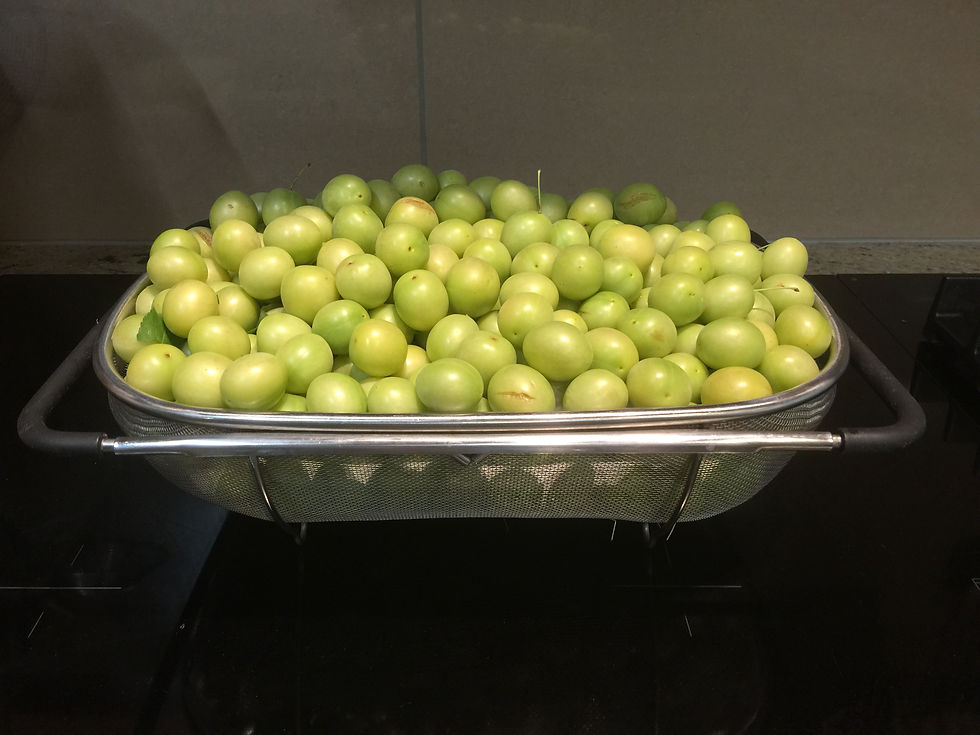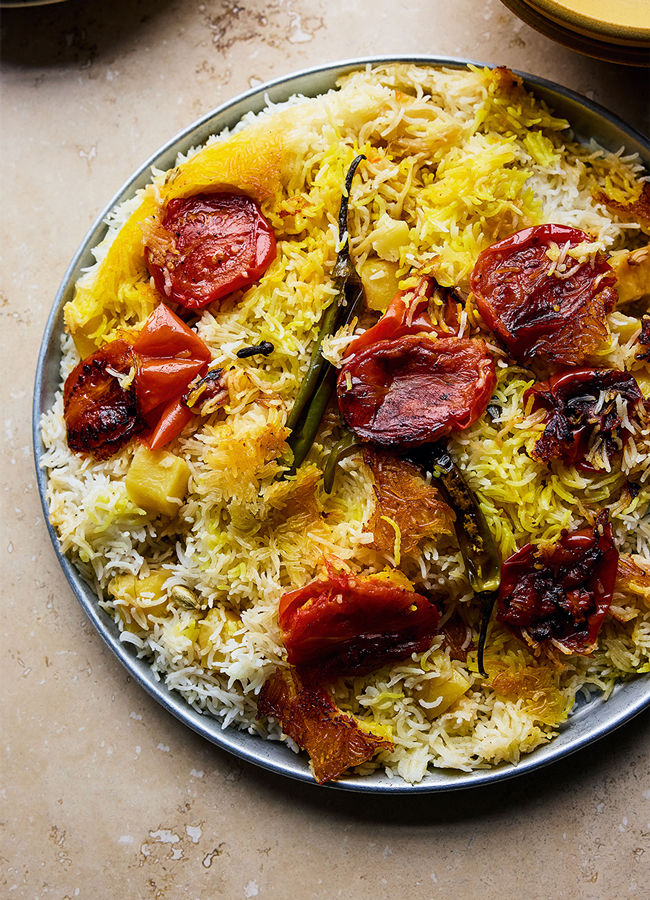So many plums, so I'm trying fruit leather
- rosemary
- Dec 1, 2020
- 6 min read
"I could of course just leave the fruit on the tree for the birds, but that seems wasteful somehow. You have a tree laden with fruit so the gut reaction is to pick it. " Me

It's that time of year again. Wild plum time and yesterday I stripped one of my trees - the one that produces yellowy green plums. I have a very large colander full - see here - and I suppose I am going to make jam. There must be a few kilos in there. And the tree on the fence line near the water tank is also loaded so I have to pick that one tomorrow too. Then there's the one with little red plums just outside my window here. I've missed the one by the Gatehouse - I think the birds have already got to that one - ditto for the one over by the tennis court. But it doesn't matter. I mean I don't really need jam. I have a lot of jam waiting to be used, so I shall probably be giving a lot of it away. Which is fine. And I will do that but I think this year I might try a fruit leather as well. People don't seem to like chutney, which is sad, because it's easier than jam.

Ages ago now I bought a boxed set of River Cottage handbooks, my favourite of which is the one on preserving which is written by Pam Corbin. It's an excellent little book covering just about every way you can preserve food. When I first read it I was particularly intrigued by this photograph which is of apple and blackberry fruit leather.
No I had no idea what a fruit leather was - I don't think they had them when my children were going to school, although I believe they are now a supermarket lunchbox staple. But of course those fruit leathers which I think are called fruit rolls have all kinds of additional and undesirable extras. If you do it yourself all it will likely have in it is fruit and maybe a bit of sugar or honey, depending on how sour your fruit is. But then again, maybe a bit of sour is good. Certainly one website aimed at food for kids said that her son actually preferred it to be a little tart. But that's a matter of taste.
I do have vague memories of having come across such things somewhere - the chewiness of them, but I don't think they were a feature of my childhood, even though we were regular hedgerow foragers. Lots of Brits are, but then they have productive hedgerows, bursting with blackberries, sloes, elderberries and, if you are lucky, wild plums, such as abound in my garden. I suppose there are things like this that you can forage here, but I don't really know what they are - other than the plums. On my walks around Eltham I pass several that seem to be particularly laden this year. And it's going to be difficult to ignore them. One of them which hangs on to the footpath from a garden has particularly large ones.
Making a fruit leather is said to be a really simple process. "Cook, pulp, pass, sweeten, dry." says the website Galloway Wild Foods. But I suspect that this is yet another 'simple' thing that is not really that simple. For it seems to me that there are several things that could go wrong. Particularly with my wild plums.
However, Pam Corbin's video, which is a bit dry I suppose - no pun intended - does show you how to do it.
And if you want the really simple there is an Australian lady who makes a mango fruit leather, simply by whizzing the cut up mango in a liquidiser, spreading it on a tray lined with baking paper and dried in your dehydrator (if you have one) or the oven overnight. The video is below. It's also a little bit dry - but informative.
However, I don't have mangos - though next time David insists on buying a whole tray of mangos I might try this before they go off completely.
Because as Hugh Fearnley-Whittingstall says, and lots of others too, it doesn't really matter if your fruit is getting squidgy. My problem is that my fruit is, if anything slightly underripe which somewhat emphasises the sourness. It also means that it is not easy to depip the fruit before cooking and besides they are so small that that would just be tedious. So I will have to do the other tedious thing - which I shall have to do for jam anyway - and fish out the pips when the plums are cooked.
So first you cook up your fruit - and this is the thing about fruit leathers - jams too I suppose - you can experiment with all kinds of mixtures. Just think what might go together and experiment. I suspect that you could do the mango thing with other tropical fruit too. Although if it was very liquid I think you might have to cook it up a bit to lose some of the liquid - melons of all kinds perhaps.
When your fruit is completely soft and mushy you push it through a sieve. Yes - also simple but really hard work, so I'm not sure that it meets the criterion of 'easy'.. Somewhat like my experience of making fish soup I think. However, Pam Corbin of River Cottage does say you could use a mouli - so I think I will do that.
Then you heat it up again, this time with some honey or sugar if you need to sweeten it until it's really thick:
"You are looking for a thick, syrupy, unctuous consistency that sticks to the back of a spoon." Galloway Wild Foods
This time it's 'easy' but not that simple, as you have to be careful not to burn it. Then you spread it on to your baking paper lined trays, pretty thin - just a few millimetres - and dry it in the oven overnight at 60ºC. Let it cool then cut into strips, peel from the paper and roll up. A trick to not allow it to stick to itself is to place a sheet of greaseproof paper on the top before you cut it into strips and roll it. Now that's simple and it does look a bit like fun.
Christmas is coming so it might make some nice presents too. Most of the sites I visited talked about it being a treat for children and also how children loved the process:
"the wizardry that goes with making fruit reappear as something completely different (rollable, windable and whipable) is second-to-none." Claire Thomson - The Guardian
Pam Corbin suggests that besides just eating them you can dissolve them into fruit salads. I think they would be good on a cheese board, or maybe you could melt them into glazes and marinades.
I also saw a very cheating version whereby the lady just dried shop-bought apple sauce. Now I don't think that gets over the purity issue.
A very quick way about origins. Well it's ancient. People have been drying fruit in the sun for millennia. Persia seems to think it's theirs - they call it lavashak - and they dry it in the sun. Cover with cheesecloth to prevent it being eaten. Well actually I don't think that would prevent ants getting at it, or birds shitting on it, or Australian birds getting at it through the cheesecloth. No - here it would have to be oven dried or dried in a dehydrator. They come up for sale in Aldi every now and then if you're into that. The Syrians have a name for it too - Amardeen - and they are credited with bringing it to the USA in the early twentieth century. I'm willing to bet that the British have done it for centuries too - at least in the summer when the sun does sometimes shine. But then they've got Agas and suchlike that could do the drying don't they.
I'm still a tiny bit doubtful though, but then again, it might be like the revelation of oven drying tomatoes, or discovering how simple risotto is. I shall be encouraged by Pam Corbin who was doubtful too.
"To be truthful, I had always avoided making them, thinking they sounded complicated. But, in a spirit of experimentation, I decided to try some out for this book. They were a revelation. I discovered how easy it is to create these strong, semi-transparent sheets, and how versatile they are. They are fun to use and eat - you can cut them, roll them, fold them and pack them away. Light and easy to carry, they're full of fruity energy, so great for lunch boxes and long walks."
It's the pips I'm worrying about - and the sieving process. Maybe you could just purée the cooked fruit in a food processor. Might try that. I mean why not? Nobody suggested it though - except the mango lady. I wonder why not?









Comments